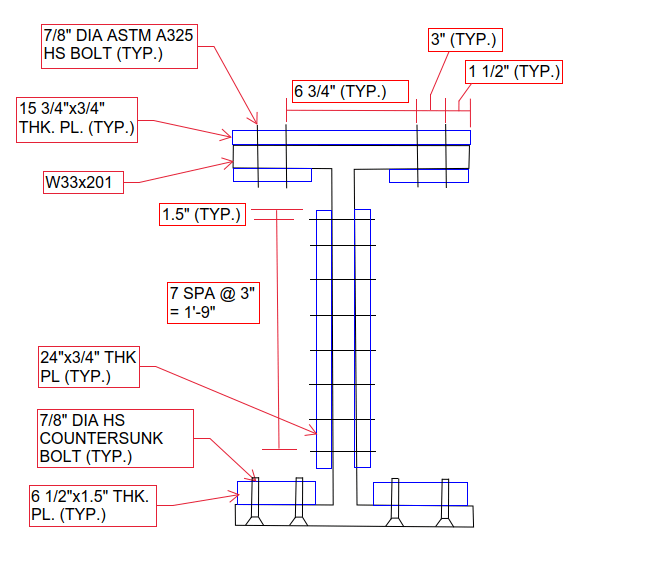bridgebuster
Active member
- Jun 27, 1999
- 3,969
I'm working on a project where we're lengthening a bridge. The plan is to splice a new stringer to the existing. However, we're looking at a non-traditional flange splice on the tension side of the beam - countersunk bolts -to avoid impacting the vertical clearance over the road below. Someone said that countersunk holes in a tension flange are fatigue prone. I couldn't find anything definitive. Any thoughts?


